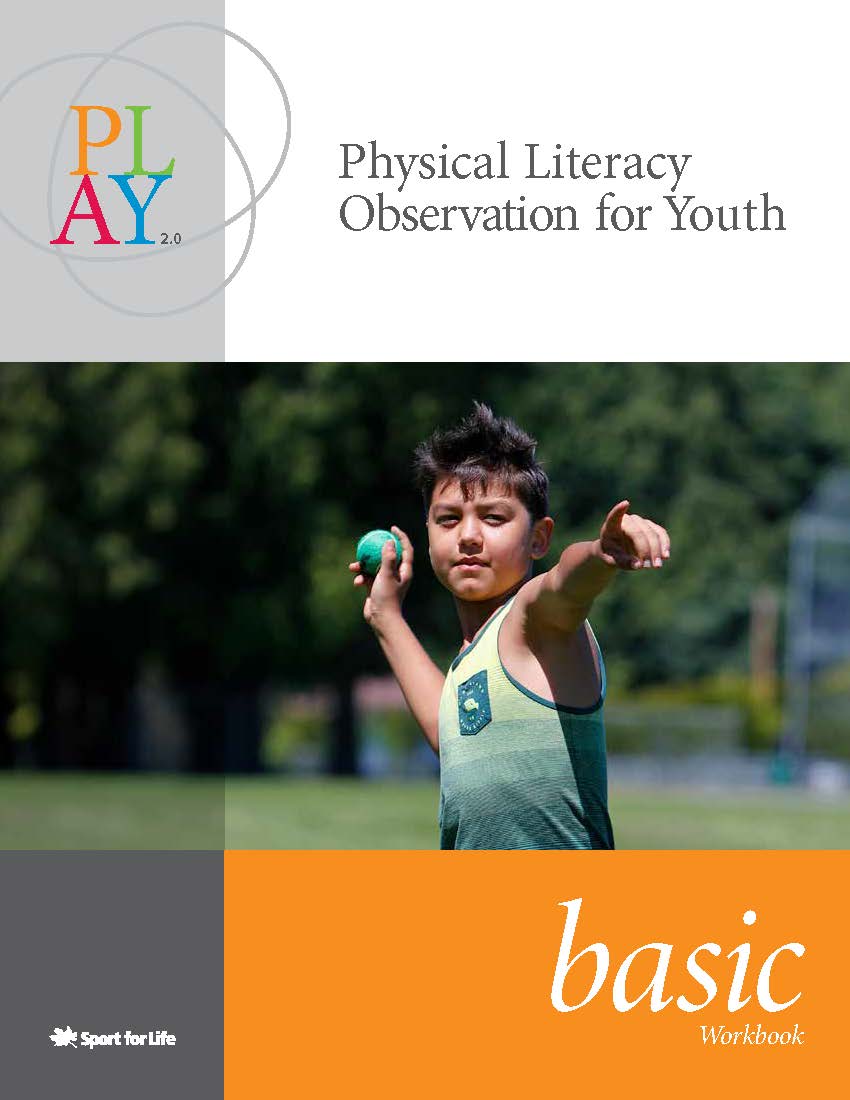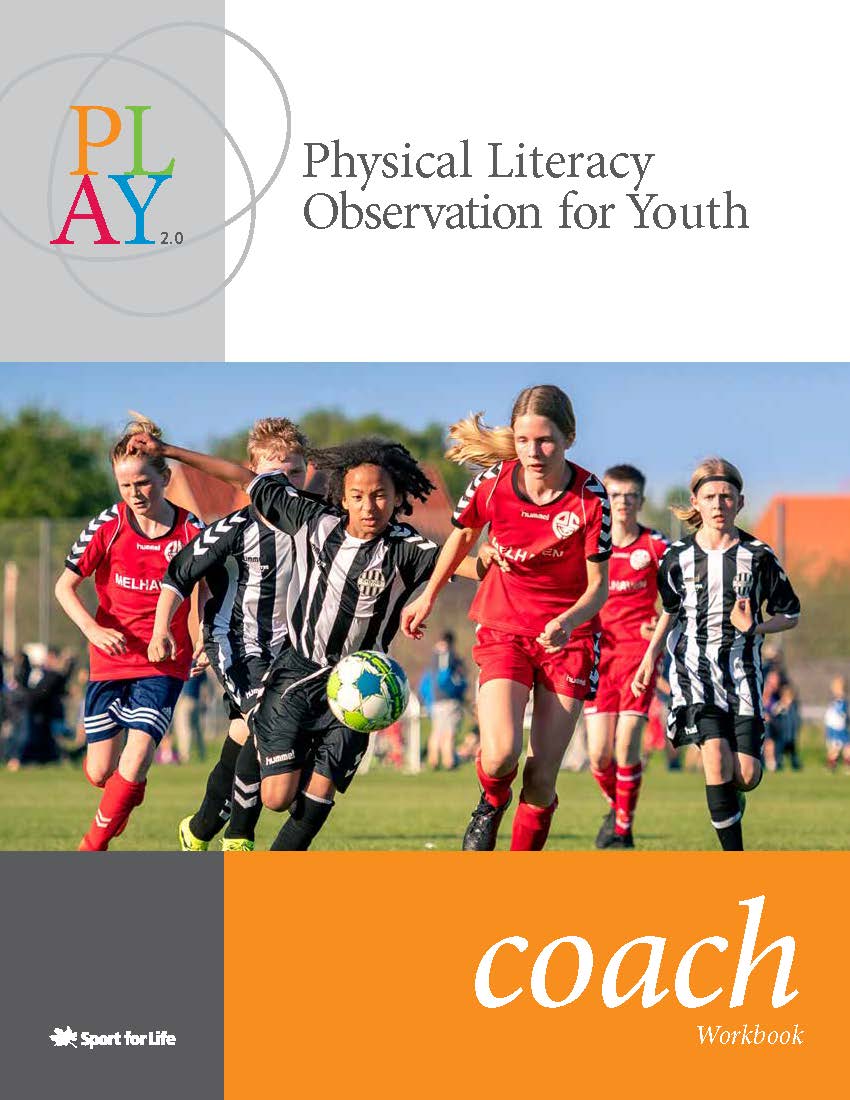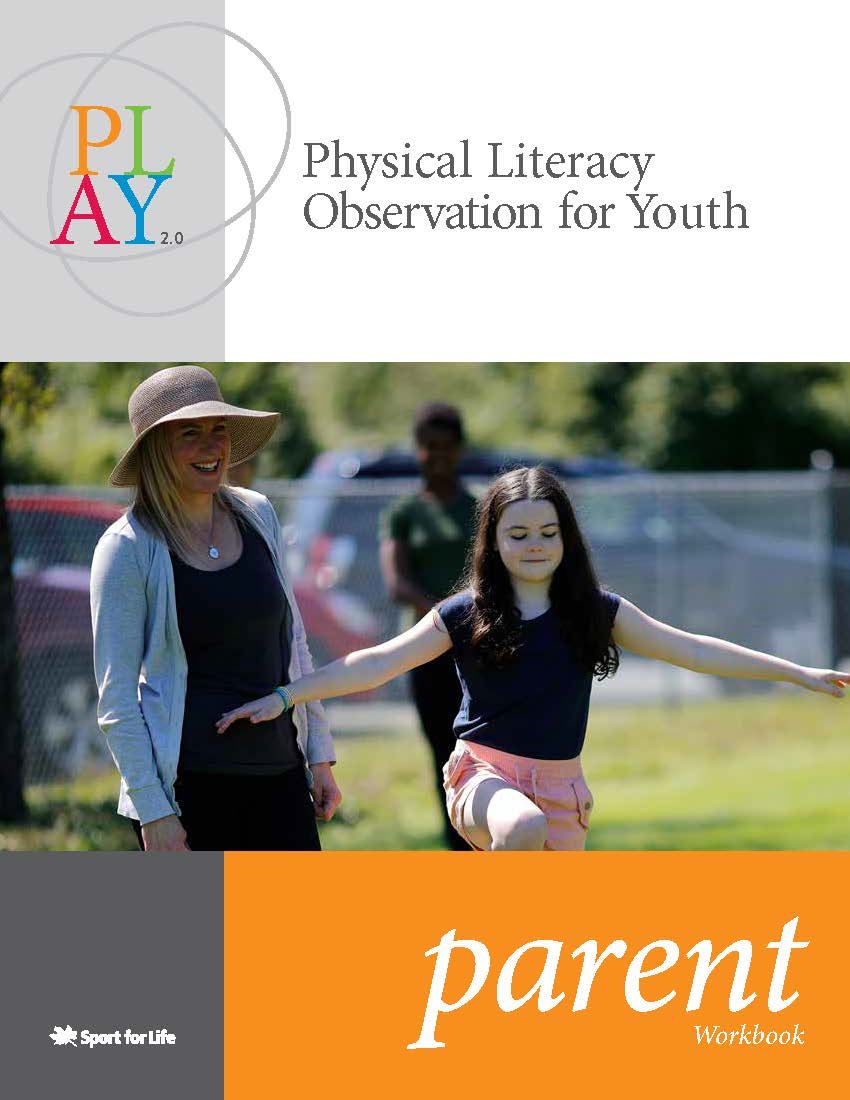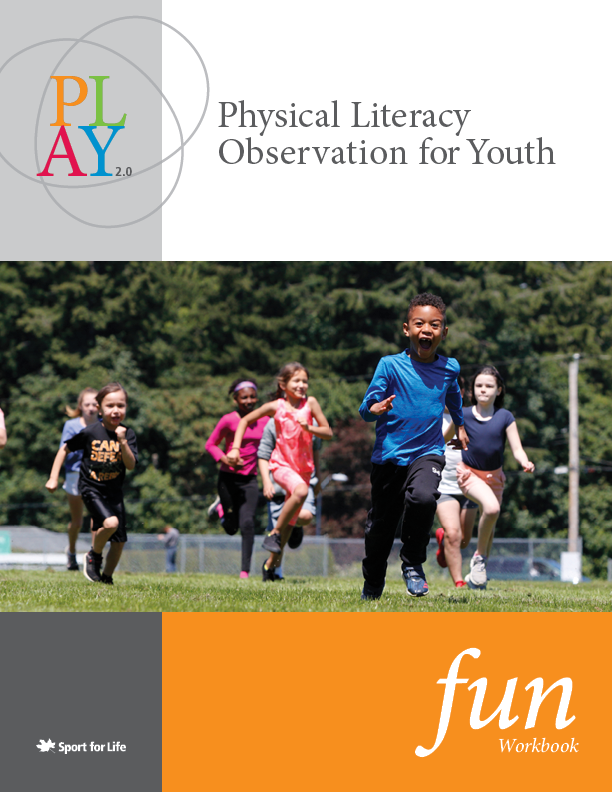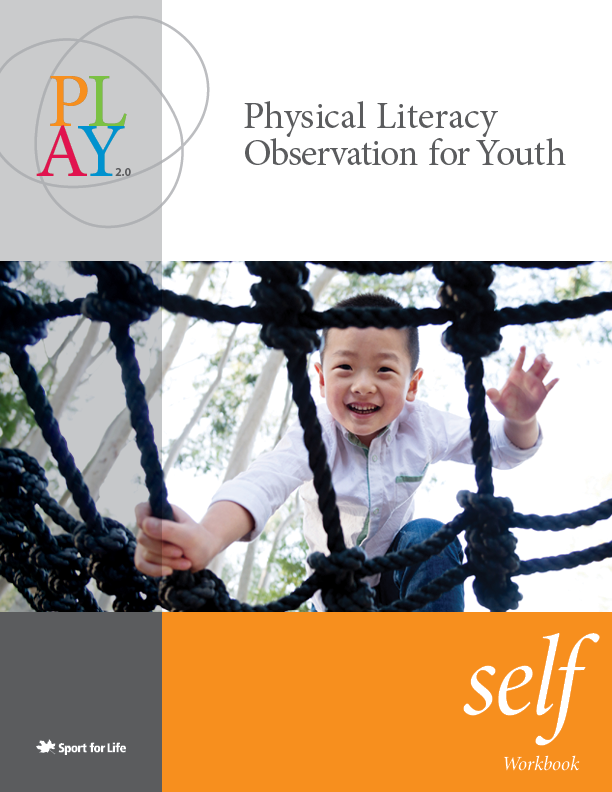The Physical Literacy Assessment for Youth (PLAY) Tools are meant to improve our population’s level of physical literacy. Directed at individuals aged seven and up, the PLAY Tools determine gaps in physical literacy development, and provide suggested actions you can take. to help improve these areas.
“Physical literacy is a gateway to an active lifestyle from childhood through to adulthood,” says PLAY creator Dr. Dean Kriellaars. “These tools will help us understand the factors that can be modified to improve the overall activity level of Canadians, leading to healthier, disease-free lives. If we don’t measure it – it isn’t important. This will place physical literacy on an equal footing with literacy and numeracy.”

For more information, visit play.physicalliteracy.ca.
PLAYbasic
A simplified version of PLAYfun that can be administered quickly and provide a snapshot of someone’s level of physical literacy.
Download:
- PLAYbasic workbook: Trained professionals refer to the workbook to help score PLAYbasic and understand the details of the assessment.
- PLAYbasic form: Trained professionals fill out the form to assess the child.
- PLAYbasic tracking form: Trained professionals fill out the tracking sheet to record the child’s progress.
PLAYcoach
is used to observe the physical development of the child and gauge their level of physical literacy.
Download:
- PLAYcoach workbook: Coaches refer to the workbook to help score PLAYcoach and understand the details of the assessment.
- PLAYcoach form: Coaches fill out the form to assess their athletes.
- PLAYcoach tracking form: Coaches fill out the tracking sheet to record their athletes’ progress throughout the season.
PLAYparent
Parents of children aged seven and up will use PLAYparent to assess the level of physical literacy in their child in an unbiased manner, ideally in combination with PLAYself.
Download:
- PLAYparent workbook: Parents refer to the workbook to help score PLAYparent and understand the details of the assessment.
- PLAYparent form: Parents fill out the form to assess their child.
- PLAYparent tracking form: Parents fill out the tracking sheet to determine their child’s physical literacy score and record the child’s progress.
PLAYfun
is used to observe the physical development of the child and gauge their level of physical literacy.
Download:
- PLAYfun workbook: Trained professionals refer to the workbook to help score PLAYfun and understand the details of the assessment.
- PLAYfun form: Trained professionals fill out the form to assess the child.
- PLAYfun scoring form: Trained professionals use the score sheet to determine the child’s physical literacy score and to record the child’s progress.
PLAYself
allows a child to gauge their current level of physical literacy based on their own perception.
Download:
- PLAYself workbook: Coaches, trained professionals, and parents refer to the workbook to help score PLAYself and understand the details of the assessment.
- PLAYself form: The child fills out the form to assess their physical literacy.
- PLAYself scoring form: Coaches, trained professionals, and parents use the score sheet to determine the child’s physical literacy score.
- PLAYself tracking form: Coaches, trained professionals, and parents fill out the tracking sheet to record the child’s progress.

PrePLAY
uses different types of questions to fully observe a child’s physical literacy.
Download:
- PrePLAY workbook: Coaches, trained professionals, and parents refer to the workbook to help score PrePLAY and understand the details of the assessment.
- PrePLAY scoring form: Coaches, trained professionals, and parents use the score sheet to determine the child’s physical literacy score.

